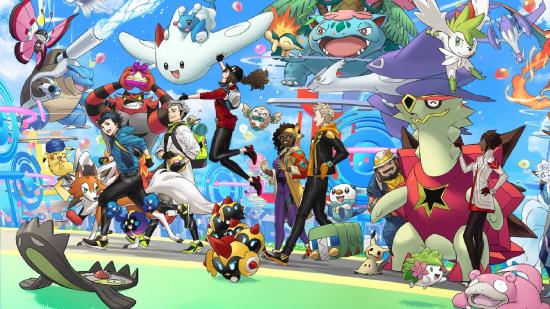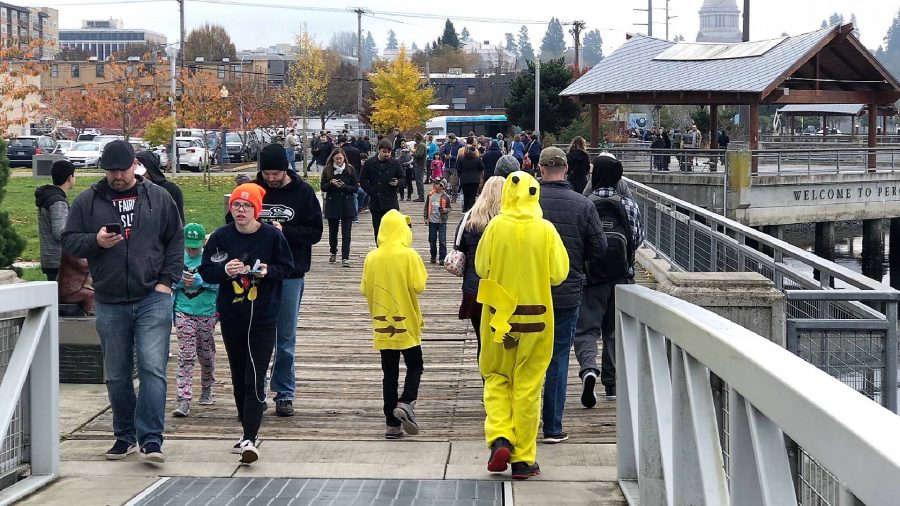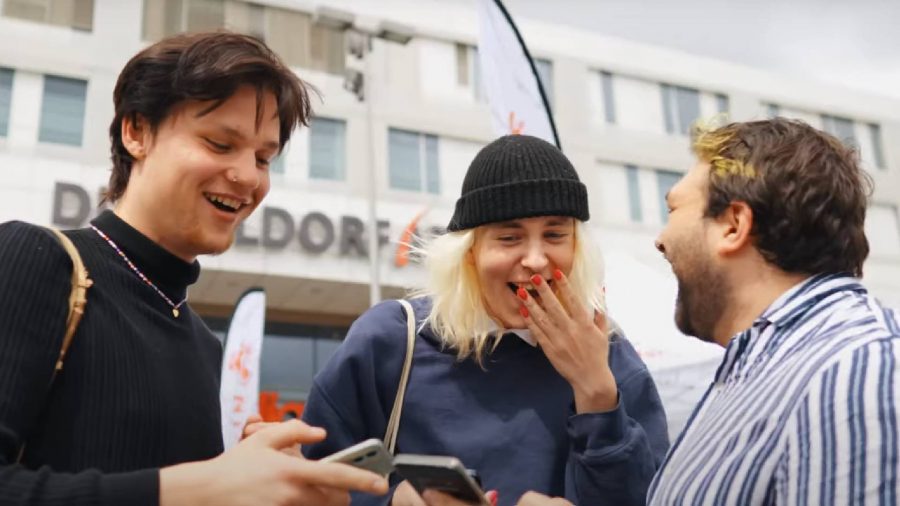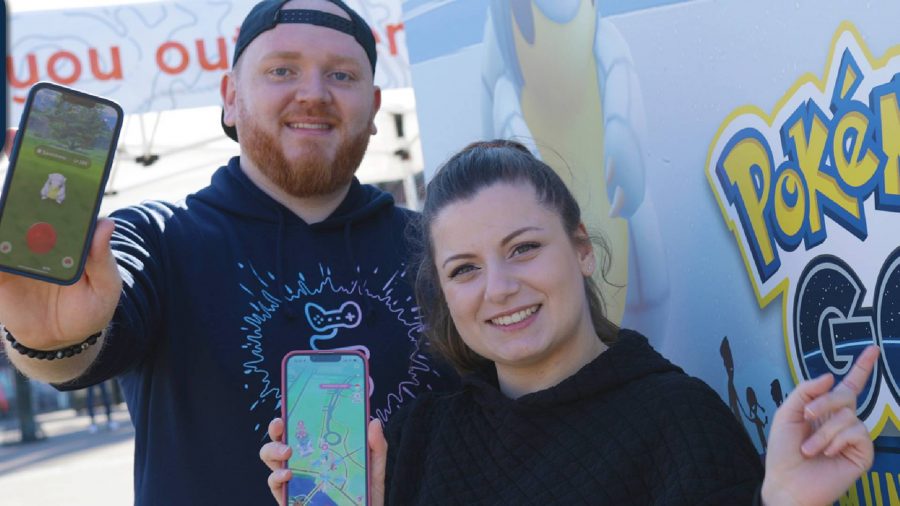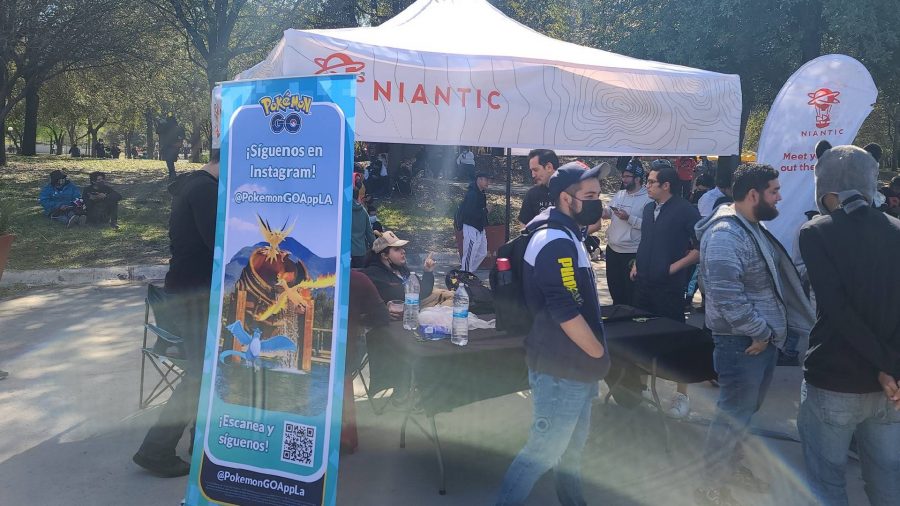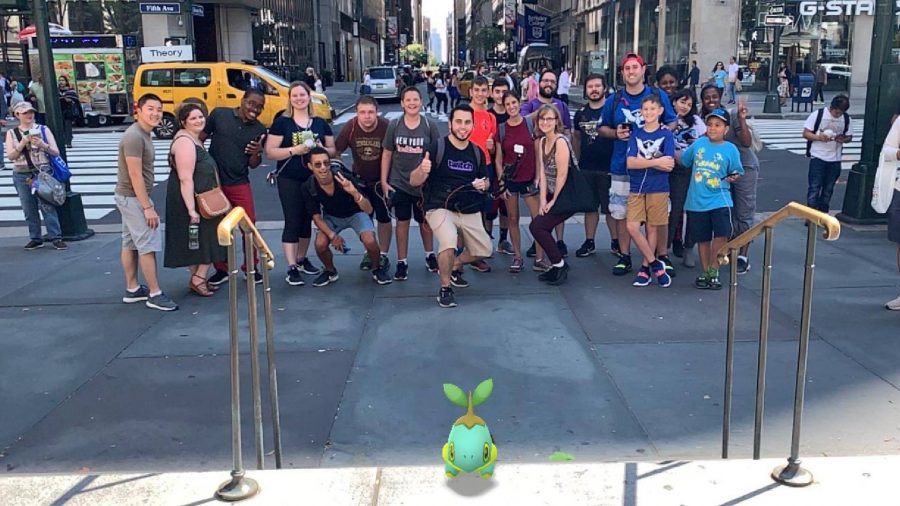It still feels like yesterday that Pokémon Go fever swept the world. A phone in every hand, throngs of people hitting the streets, joined in harmony in that everlasting quest – gotta catch ‘em all. Well, as the mobile titan recently hit its sixth anniversary, we sat down with Niantic’s Michael Steranka to discuss the title and the work that the development team have put in over those years to improve and build upon the stellar concept.
Michael Steranka has been working at Niantic since the very early days, and currently holds the role of Director for Product Marketing for Pokémon Go, working closely with the communities in various markets, and has even previously won the Pokémon Go Battle League. Managing such a global game, and one that continually shifts over the years to tackle new features, Pokémon, and growing fan requests is no easy feat, so we wanted to get some insight into what challenges the team at Niantic face.
If you love Pokémon Go, and like us, are still on a mission to be the very best, be sure to check out our other articles on the game. We just recently wrote about Pokémon Go – the story so far, interviewing several community members about what makes the game so magical, including Joe Merrick from Serebii. Meanwhile, our Pokémon Go couples article takes a look at how the game played cupid and brought together fans of the franchise.
When approaching Niantic, we wanted to talk about the struggles they’ve faced over the last six years, how they react to fan demand, and what makes the game so special to so many people. It’s no secret that the game has undergone a huge evolution (I couldn’t help myself) in the six years since launch, with battles, trading, mega evolution, and so many other features added over time. So, just how does the team approach responding to fan demand, and how exactly do they keep this app growing exponentially?
One understated aspect is the huge communities around the world, and just how difficult it is to wrangle development across different continents while delivering a unified message to all fans. Michael Steranka breaks it down for us, saying “our corporate mission is ‘Inspiring people to explore the world together’. We want people to go out, explore, and connect with others, and that drives every decision we make across regions and platforms! This has been our underlying design tenant for Pokémon Go since the very beginning.”
Pokémon fans are also one of the most vocal groups, with many players enjoying different aspects of the games from trading, collecting, and just simple battling. Every trainer also has a different favourite set of ‘mons, so fan demand differs from player to player. Therefore, we had to ask Steranka how Niantic responds to fan demand, and what changes the game has seen in direct response to fan feedback.
Steranka explains that “Pokémon Go has evolved so much over the past six years; in the beginning, it was a simple game of throwing a ball and catching Pokémon. Then we added Raids and Friend features to make it more fun to play with other people, and also added many other features, such as Go Battle League, Go Snapshot, and Buddy Adventures so that players of all interests could explore the world with Pokémon in their own way.”
As you can see, there are many things for you to do in Pokémon Go, there’s something for everyone, and guess what? In the words of Steranka, “Each of these features was created in response to feedback from Trainers, but this is just the beginning. We have so much more in development, and I can’t wait to reveal it to our players around the world!”
If there’s one thing you can always call Pokémon fans, it’s passionate. The decades-old franchise holds a special place in the hearts of millions, mainly thanks to playing the original titles on Game Boy and watching the anime on idyllic Saturday mornings with family. Luckily, many of those fans now work at Niantic, and that passion spills over into development, including Steranka. He says, “I’ve personally been a die-hard Pokémon fan since Red and Green first launched in Japan in 1996! But it’s not just me -many Niantic employees grew up watching the Pokémon anime or playing Pokémon games. I believe this level of affinity for the Pokémon franchise helps us build an authentic experience and empathise with what players want to see.”
While Pokémon Go has undergone many changes over the years, like many other companies, Niantic faced no greater struggle than adapting to the pandemic. Operating an app entirely designed to encourage movement and outdoor exploration presented unique issues, and Niantic made huge changes to accommodate where it could. Some changes were temporary, like the distance players needed to be at for Pokémon and gyms, as well as the introduction of remote raid passes, though remote raid passes still exist in a limited capacity – you can now earn or buy them with the in-game currency. Niantic even came out to defend some of these changes in a blog post, after fans sent a letter signed by thousands complaining about the changes.
These changes helped regular players adapt to stay-at-home life, but also meant players with disabilities found the app to be more accessible. Speaking on how the approach that Niantic took to these changes and the challenges the pandemic caused, Steranka explains the team has “added many features to Pokémon Go that have increased the variety of activities Trainers can complete from home, such as Daily Encounters, Bonus Field Research, Remote Raids, Go Battle League, and Team Go Rocket Balloons.”
While it’s fantastic that players can enjoy aspects of the game from home, Steranka points out that “if Trainers can enjoy the full slate of what Pokémon Go has to offer without ever going outside then we’ve completely missed the mark with this game.”
Finally, Steranka adds, “Ultimately our mission as a company is to leverage technology to bring people outside and discover the world and community around them.” Accessibility is a complicated topic, and while personally, I’d like to see more accommodations made for players, it’s true that the heart and soul of Pokémon Go have always been about getting people out in the streets, joining the community, and exploring.
I hope Niantic can make more concessions that don’t impede on the vision the company has. Smaller changes like moving community day from six hours to three hours, and the alterations to incense spawn rates often feel like changes made with impunity, and more about money than like pillars of the game that need reinstating.
Naturally, working on a franchise where millions of people have such a personal attachment must be tricky. Fans hold Pokémon close, which makes the community a passionate and caring one. Pokémon Go has also led to a resurgence in popularity, and Niantic has become a caretaker of the franchise in its own way.
Nobody is arguing Pokémon hasn’t always been huge, but to ignore the cultural impact of Pokémon Go and its effect on the franchise at large is to discredit the work of Niantic. And it’s a sentiment that Steranka shares, as he says “something we’re incredibly proud of at Niantic is how much Pokémon Go has expanded the community of Pokémon lovers beyond just the core video game, card, and anime fans.”
This resurgence in the franchise has helped expand the userbase far beyond its original demographic as well, a huge achievement and a lovely sentiment. Steranka told us “when you go to a Pokémon Go event like Go Fest, you will quickly notice how diverse the player base is; there are people of all ages and backgrounds enjoying the same amazing experience together! That to me is what sets this community apart from any other I’ve had the fortune of working with.”
As Pokémon Go has grown and changed over the years, the Pokémon franchise itself has moulded around it. Titles like Pokémon Let’s Go Pikachu & Eevee have capitalised on the success of the mobile game, and a Pokémon TCG: Pokémon Go pack has just hit the market. The success of Pokémon Go is worth celebrating, and it’s the community that helps to keep both the app and the franchise so fresh, so many years later.
Talking about the work done by the community and Niantic to keep breathing new life into the game, Steranka says, “When we talk about Pokémon Go at Niantic, we often refer to it as a “forever franchise.” We want to keep evolving this game to keep things fresh and exciting for the millions of Trainers who play every day.” It’s a monumental task to keep such a juggernaut app in the zeitgeist and keep it profitable, but Niantic has done a fantastic job at updating and crafting a remarkable AR experience.
This achievement is clearly something staff at Niantic appreciate as well, as Steranka explains, “we’re so thrilled that even after six years, Pokémon Go continues to grow, and it’s not lost on us how special that is.”
After six whole years of the app, and so many years of working there, plenty of issues have arisen from the many changes made, and the response to fan demand. As Steranka explains that “the biggest challenge working on Pokémon Go has been designing experiences that will appeal to such a broad community of players. Everybody has different things they’re passionate about, whether that’s PvP, or shiny collecting, or AR photography, or raiding.”
This is where one of the biggest issues lies with Pokémon Go. So many people want different things. While some simply want to catch monsters and love the community days for extra shiny Pokémon, others dive deep into IV training and building the perfect battle team. Pokémon Go is several games in one in this sense, and the balance is a tricky one. Steranka follows up, saying, “delivering on experiences that serve the diverse passions of our player base has been difficult, but it’s such a fun challenge to tackle as a team.”
It’s a rewarding fan base though, as that passion is powerful and contagious. Players spread the love of Pokémon Go across social media, work alongside friends to catch ‘em all, and shower praise when necessary. It’s a double-edged sword for sure, but when things go right, the Pokémon fan base is an incredibly supportive one.
For Steranka, the rewards make it all worth it, as he explains,“We often receive letters from Trainers around the world who tell us about how Pokémon Go has helped them overcome social anxieties, discover friend groups after moving to new cities, or even meet their new spouses.” The in-person community aspect of Pokémon Go really is remarkable. It brings so many people together, an aspect of the game we touch on even more in our Pokémon Go couples article.
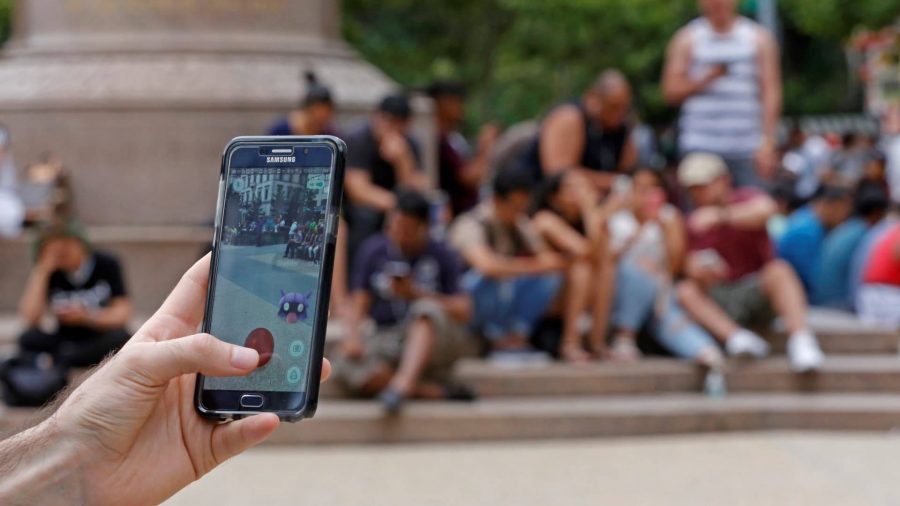
For Niantic, seeing this playout within the community is just as special and underlines the pillars of the game perfectly. Pokémon Go is a game designed to bring people together, get trainers out in the streets, and build a greater community. A sentiment Steranka clearly shares, as he says “there’s truly no other game out there that can do this, and the fact that we’ve been able to make such a positive impact on peoples’ lives through a video game is something I will always cherish.”
After six years, you might think it’s time for Pokémon Go to wind down a bit, but clearly, Niantic sees it as an ever-evolving entity and a “forever franchise”. Who knows what issues await the team in the future, but the fan base will always be there, and new mainline Pokémon games mean there will be no shortage of Pokémon to catch or ways to interact with them.
New games also mean new Pokémon fans, so Niantic has the unenviable task of appeasing the younger generation and the old guard. Pokémon is a children’s franchise after all, but people of all ages will hold it dear forever. However, the team behind the mobile phenomenon clearly understands this, as Steranka says “there are millions of new Trainers coming into Pokémon Go every year, and it’s so important that we help those Trainers discover their local communities through exciting gameplay experiences.”
As for the future, Niantic clearly has plenty planned, and I’m sure the game will still be going strong as we start to talk about a decade of Pokémon Go. The fan community will always be a huge part of this, and hopefully, over time, the bond between Niantic and that community can grow even stronger. Steranka certainly hopes so, claiming that the team is “always keeping our eyes peeled for feedback from our players, and we hope to continue to surprise and delight them with everything we have planned for Pokémon Go!”
It’s clear that Niantic itself is full of ardent Pokémon fans, and that passion is steering the Pokémon Go ship alongside the community, while they continue doing what they can to keep up with ever-changing fan requests. Fans are never going to agree with every decision made, and ultimately Pokémon Go is a business. Balancing fan satisfaction, real-money purchases, and rewards is a tricky one, but it’s clear Niantic is listening, learning, and looking to deliver an experience that new and returning fans can all enjoy.
Finally, we had to ask Steranka what his favourite pocket monster is… “The only correct answer to this question is Machamp!” We find this to be a most acceptable answer.
